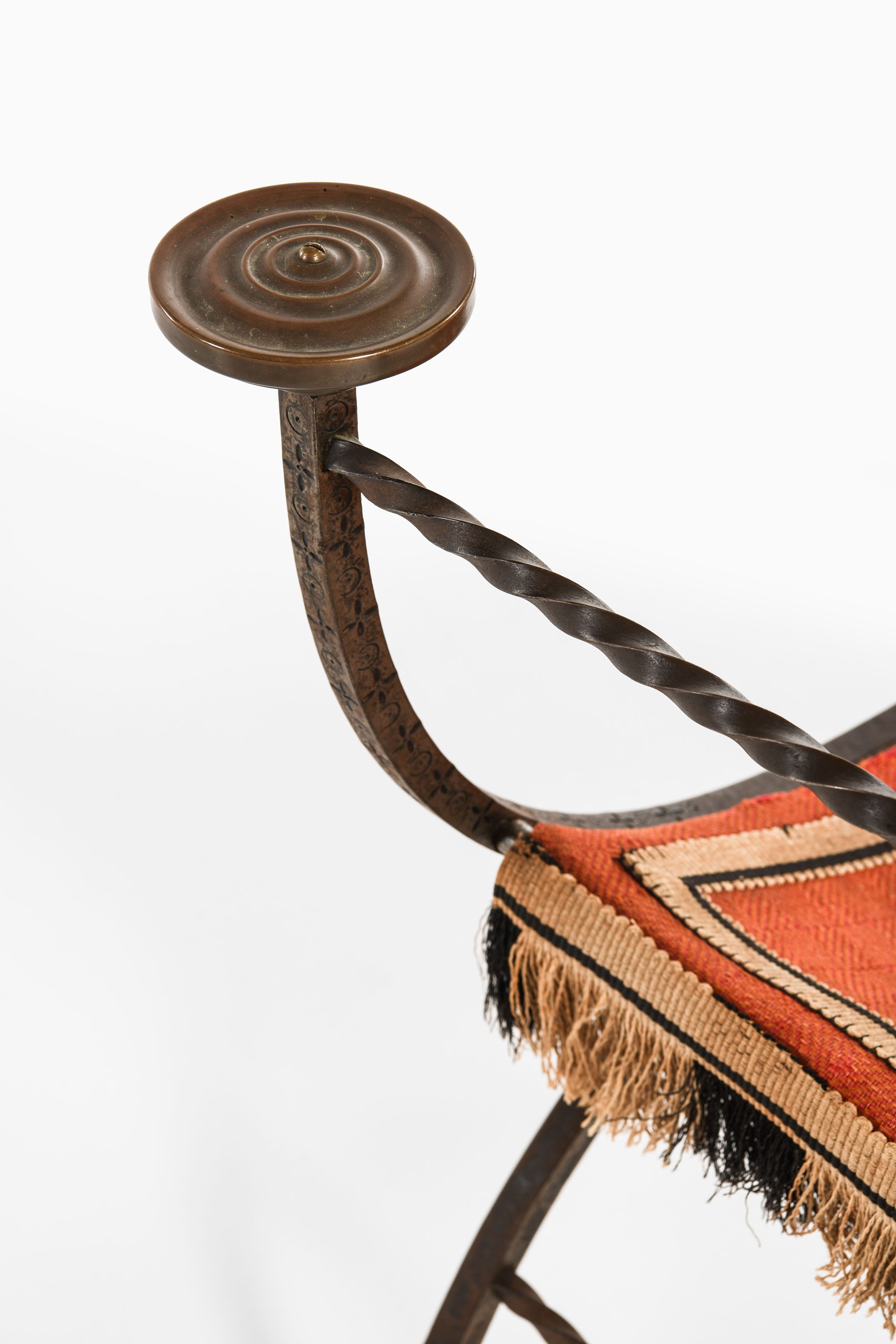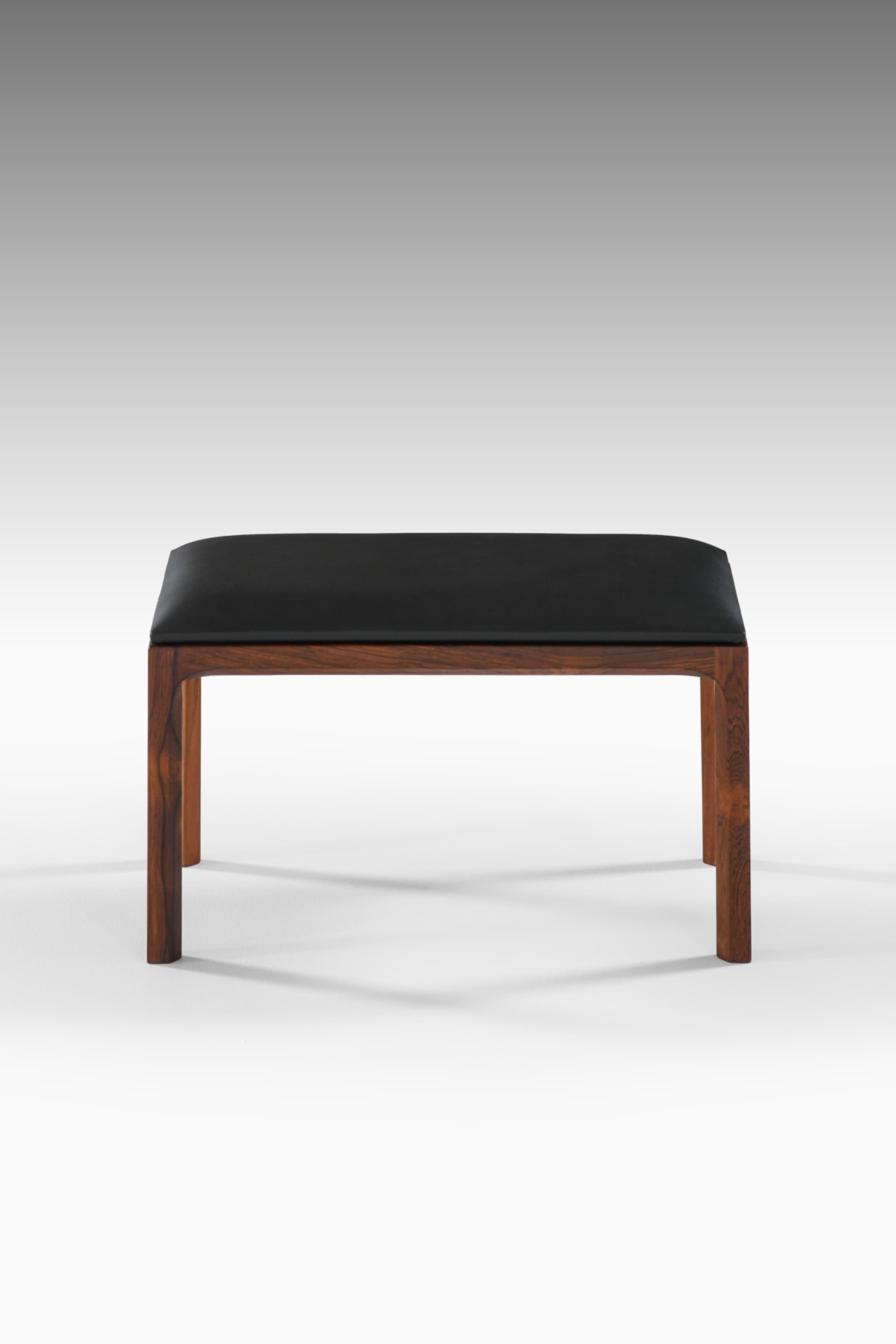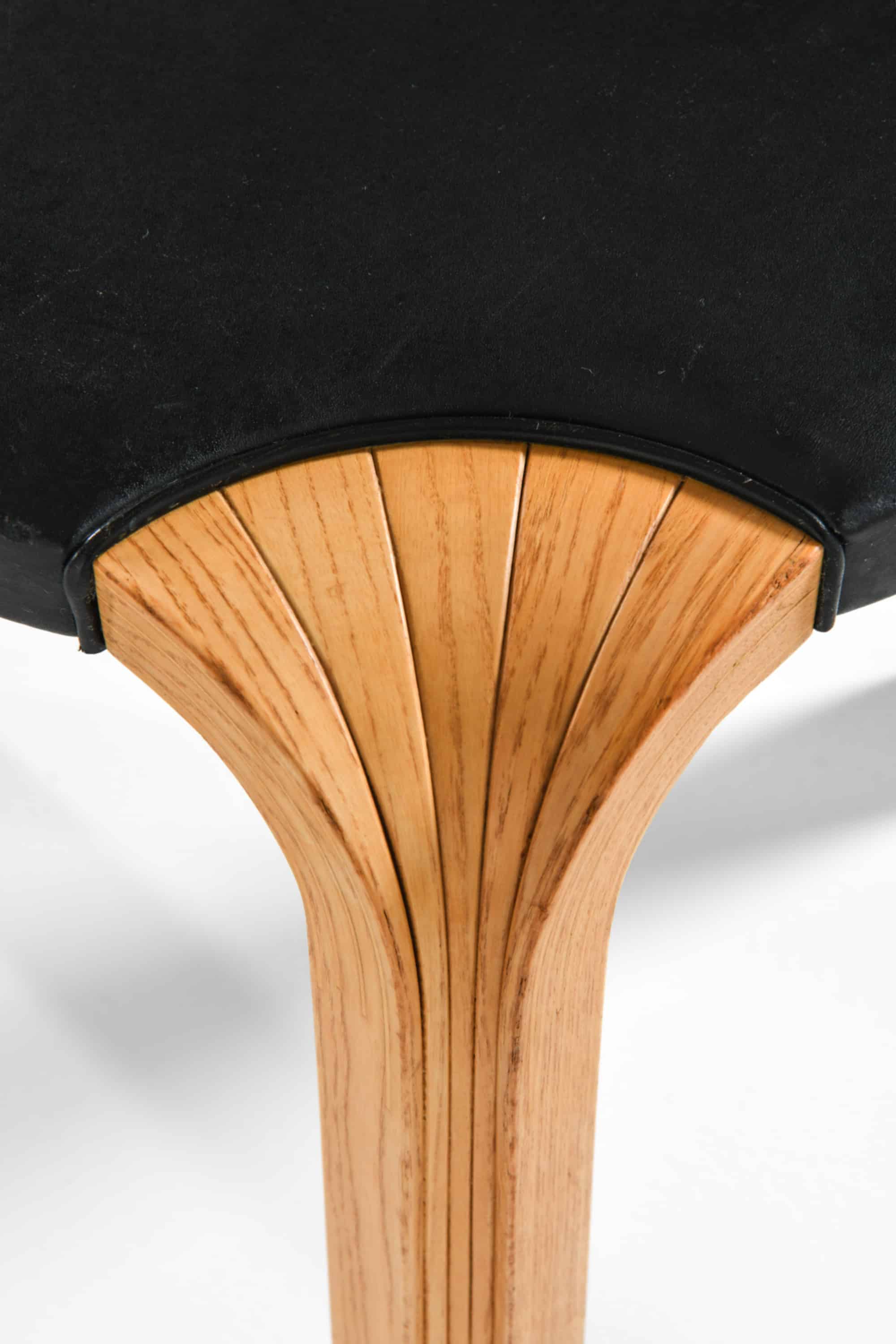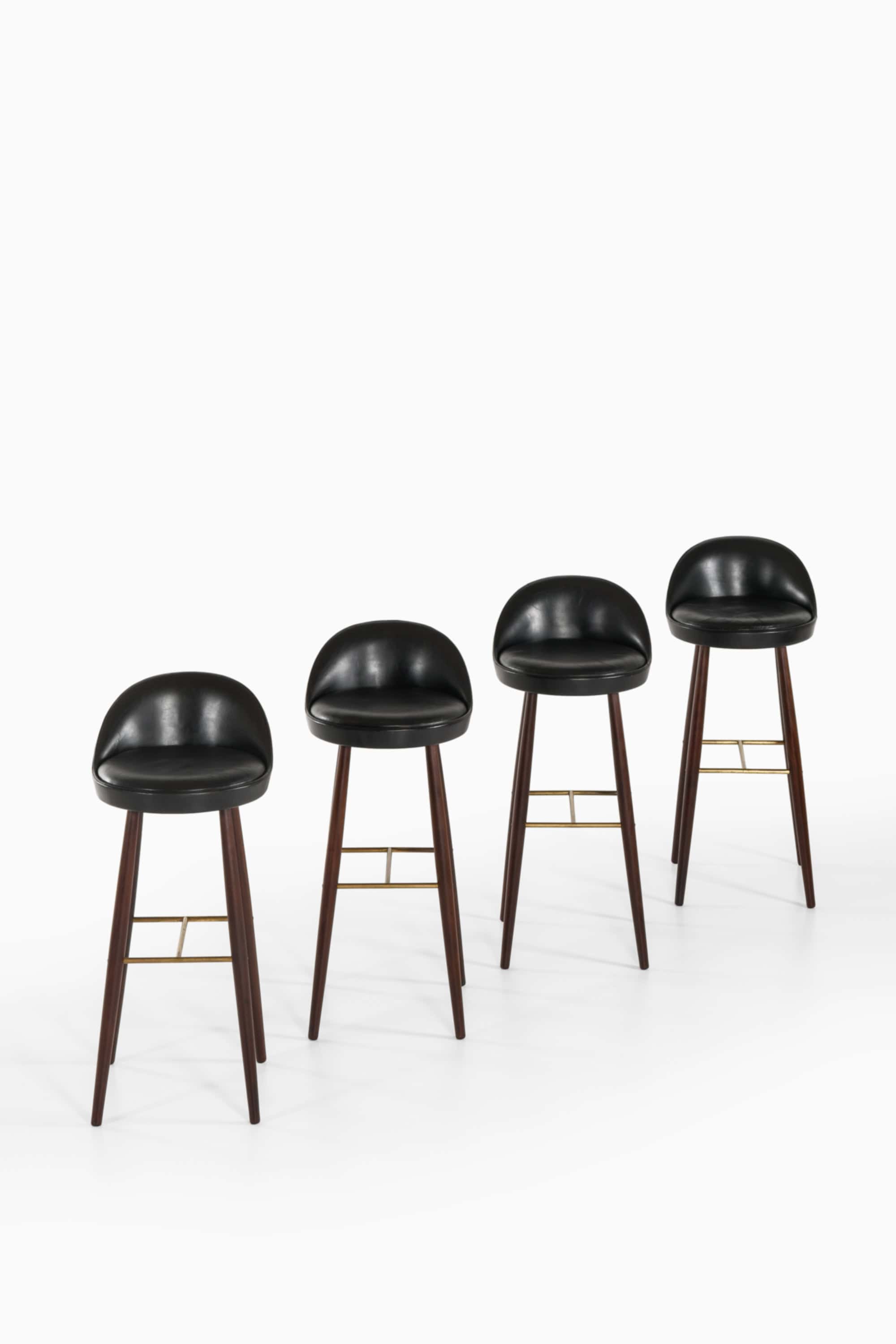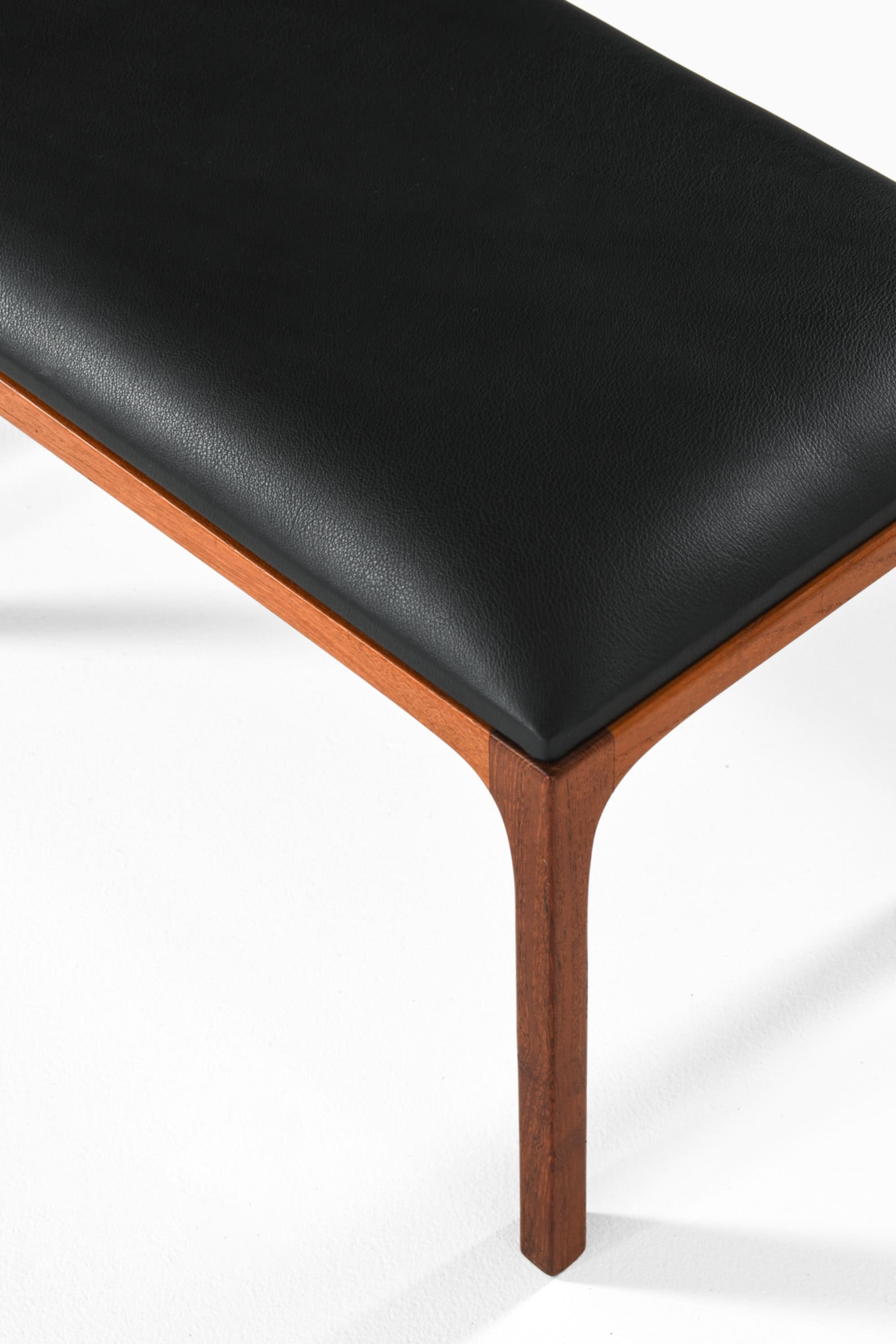Carl Hörvik stool
This exceptionally rare neoclassical stool, designed by Carl Hörvik in the 1920s and produced in a very limited edition for Elsa Gullberg’s renowned textile and interior design studio, is a significant artifact of Swedish Grace design—a style that emerged in the interwar period as Sweden’s refined interpretation of Art Deco. The stool represents a compelling synthesis of classical form, artisanal ironwork, and decorative textile art, reflecting Hörvik’s ability to integrate historic stylistic references with a modernist sensibility.
The frame of the stool is composed of forged iron, finished with a rich patina that has developed over the course of a century. The ironwork is characterized by impressed ornamental motifs and elegantly twisted crossbars that intersect beneath the seat in a symmetrical, almost architectural arrangement. These decorative flourishes evoke neoclassical patterns—stylized yet restrained—and emphasize the hand-forged craftsmanship of the piece. Delicate brass knobs and spherical accents punctuate the corners and joints of the frame, providing a subtle contrast to the dark iron and introducing a muted golden warmth that elevates the composition.
The seat is upholstered in its original rust-orange textile, a richly hued fabric that showcases detailed embroidery in black and gold threads. This geometric and ornamental stitching, likely designed or selected under Elsa Gullberg’s direction, reflects the early 20th-century interest in uniting textile and furniture design as part of a cohesive interior concept. The seat edges are finished with a decorative fringe in black and beige, further enhancing the stool’s visual texture and artisanal quality.
The overall form of the stool is notable for its graceful semicircular contour, with the seat subtly curved to follow the arc of the iron base. The dimensions—74 cm in width, 44.5 cm in depth, 64.5 cm in height, and 45 cm in seat height (approximately 29.1 × 17.5 × 25.4 inches with a seat height of 17.7 inches)—give the piece a presence that is at once sculptural and functional, making it suitable as an occasional seat or accent object in refined interior settings.
The stool remains in good original condition, with age-appropriate wear that attests to its authenticity. The patinated iron structure is stable and well-preserved, while the brass elements exhibit a soft, time-worn luster. The textile, although showing minor fraying and discoloration, retains its integrity and decorative appeal, offering a rare glimpse into early Scandinavian textile artistry.
Carl Hörvik (1882–1954), an architect and designer associated with Sweden’s early 20th-century neoclassical revival, was known for his sophisticated furniture and interior commissions. His work during the 1920s reflects a transition from historicist ornamentation toward a more modern and stylized decorative vocabulary, a shift that came to define the Swedish Grace movement.
Elsa Gullberg (1886–1984) was a pioneering figure in Swedish textile and interior design, known for her commitment to integrating modernist design principles into domestic interiors. Her studio served as a platform for some of the most innovative furniture and textile collaborations in early 20th-century Sweden, promoting a holistic vision of design that was both functional and artistically refined.
This stool is a highly collectible and museum-worthy piece that encapsulates the elegance and craftsmanship of Swedish Grace, and exemplifies the rarefied aesthetic produced by Hörvik and Gullberg during this formative period in Scandinavian design history.
Dimensions (cm) | W: 74 / D: 44.5 / H: 64.5 / Seat H: 45 |
| Producer | Elsa Gullberg |
| Color | Black, Orange, Red |
| Decade | 1920s |
| Country | Sweden |
| Style | Neoclassical, Scandinavian Modern, Swedish Grace |
| Material | Brass, Fabric, Iron |
| Item Number | 239324 |
Carl Hörvik








